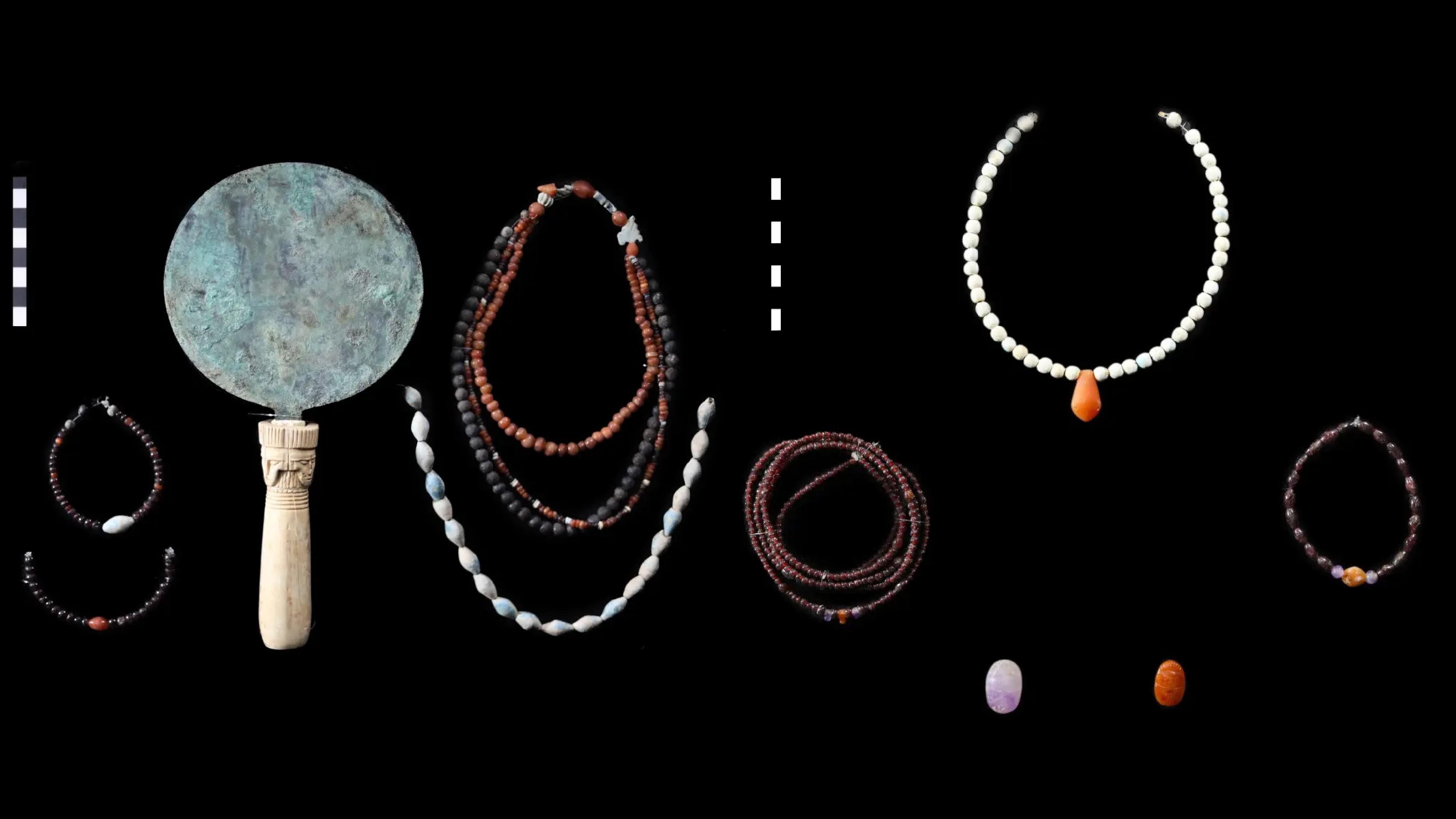
While excavating an ancient Egyptian necropolis near Luxor, archaeologists discovered a 3,800-year-old tomb containing multiple individuals who might represent different generations of the same family.
The team, working at the South Asasif necropolis, found the remains of 11 individuals — five women, two men, three children and one who could not be identified. An analysis of the grave goods indicated that the burials date to the 12th dynasty (circa 1981 to 1802 B.C.) and 13th dynasty (circa 1802 to 1640 B.C.).
The deceased were originally wrapped in linen and buried in wooden coffins. However, flooding that occurred after their burials damaged the family's remains, the team said in a statement from the South Asasif Conservation Project.
The tomb dates to a period known as the Middle Kingdom (circa 2030 to 1640 B.C.), a time when Egypt was unified and thriving. "This is the first Middle Kingdom tomb found in the area," the team wrote in the statement.
Artifacts from the burials include many pieces of jewelry, including necklaces, bracelets, armlets and scarab rings. Two of the burials had copper-alloy mirrors with ivory handles. One of the handles depicts a four-faced Hathor, an ancient Egyptian goddess associated with fertility and love.
One artifact in particular caught the archaeologists' attention: a necklace with 30 amethyst barrel beads and a "Ba" amulet in the center. In ancient Egypt, the Ba was considered part of a person's soul and was often represented in bird form.
"Another important find is a green-blue glazed faience [ceramic] fertility figurine with truncated legs," the team wrote in the statement. "It is well-modelled and decorated with a variety of jewelry and lozenge [diamond] markings on the legs and torso," they added. The figurine's head has holes that were once strung with beads meant to be hair. Although the "hair" has since broken apart, nearly 4,000 mud beads were found next to the figurine.
Wolfram Grajetzki, an Egyptologist and honorary senior research fellow at University College London who was not involved with the excavation, told Live Science in an email that the "personal adornments [such as jewelry] are typical for the period." He noted that "amethyst was a very popular stone in the Middle Kingdom and there is no surprise, it was found here too."
Luxor (ancient Thebes) likely once had many Middle Kingdom tombs that were destroyed in later times, Grajetzki said. "There were perhaps once many more Middle Kingdom burials at Thebes, but in the New Kingdom — 1550 to about 1090 BC — Thebes became the capital of Egypt and many older burials were most likely destroyed, making this discovery quite special."







